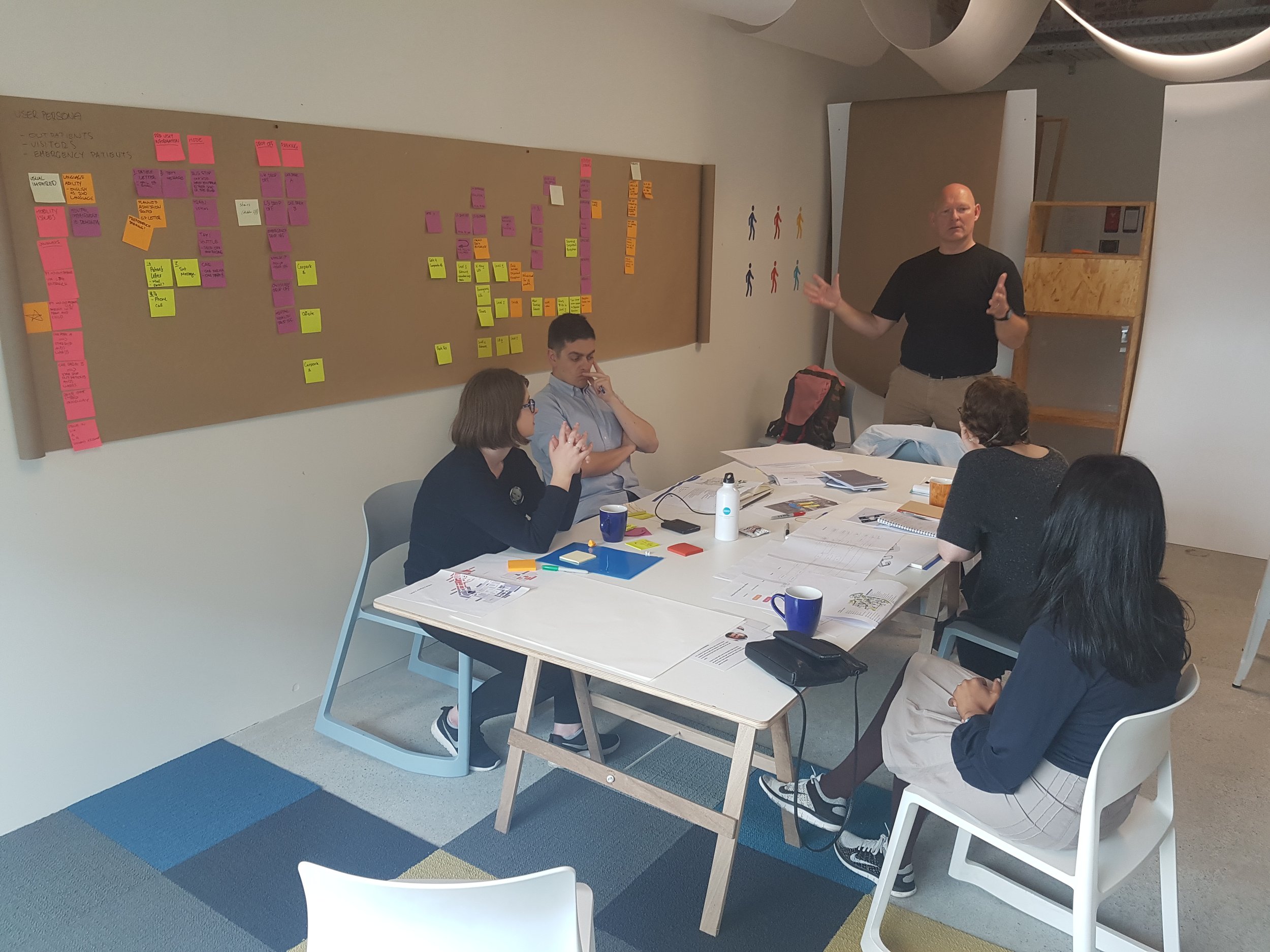Mind the research gap: The limits of human-centred design
We argue there is a bit more to the human-design puzzle than simply conducting interviews and replicating what users say they want
We’ve lamented the over-reliance on human-centred design language in the design industry for some time now.
There’s a lot of talk lately about design's role in “fostering a sense of belonging in spaces and “positively impacting health care experiences”.
Human-centred design is touted as a crucial aspect when creating products, services and built environments, especially if they are to come close to catering to everyone’s needs or aligning with end users’ wishes and preferences.
On the surface, these discussion points around human-centred design are all very positive. But on closer inspection, it can be a bit thin, especially from a holistic wayfinding perspective.
We assume that by simply speaking to end users and integrating their needs into our designs, we can solve the majority of wayfinding problems. Truth is, the wider social aspects of human wayfinding are greatly under-researched and lack critical reflection, especially when it comes to application in complex environments.
Idealisation of human-centred design
At the core of human-centred design lies a deep understanding of human behaviour, needs, and aspirations.
As the International Organisation for Standardization standard states, human-centred design “is an approach to interactive systems development that aims to make systems usable and useful by focusing on the users, their needs and requirements, and by applying human factors or ergonomics and usability, knowledge and techniques.”
This definition also comes with some associated provisos. Users are involved throughout design and development. The process is iterative and refined by users. The design addresses the whole experience and responds the way users expect. The design is a product of collaboration, diverse perspectives and cross-disciplinary
From this definition and accompanying principles, the “user-first” mentality at the centre of human-centred design has led many to believe that is all they need to do to create spaces and experiences that work and resonate with everyone. Interview some users and replicate what they say they want and voila! Human-centred design is achieved.
But there is a bit more to the puzzle than that, particularly if we look closer at the limitations of human-centred design.
Limitations of human-centred design
We certainly aren’t alone in our critical assessment of human-centred design. As a growing field of researchers acknowledge, there are limitations to what human-centred design can accomplish.
For one, sampling bias is inevitable. Some groups may be overrepresented throughout the investigation and design process, while others may be inadvertently overlooked. Experimental research may inadvertently prioritise the young or more tech-savvy at the expense of excluding older or more isolated users. There’s also the ever-present risk of asking the wrong questions, or equally as likely, the wrong people – a potential fatal error when it comes to accessibility and inclusive design.
We are familiar with the human-design research process. We question what other elements can be brought into the process to make it more social, community-orientated and dynamic
Similarly, accepted investigation methods such as interviews, focus groups or design sessions can prove fruitful, but they also have their limits. They are limited in their ability to elicit tacit knowledge. They are also expensive.
These methods are also hampered by the fact that human-centred design focuses on the individual user, their needs and expectations. Within this micro-context much can be missed, including the social, interpersonal and ethical issues that play a vital role in any good wayfinding design.
Greater consideration of social wayfinding
Much human-centred design wayfinding research has concentrated on the internal decision-making processes individuals use to contend with landmarks and spatial arrangements.
While this approach may serve to better orient the individual in an idealised, static environment, we do not live or operate in this type of world. We are part of a greater whole inhabited by other humans and dictated by constant change. This prompts a pivotal question: can human-centred design account for the reality of what it means to be a human lost in complex spaces?
We aren’t arguing for the abandonment of the existing human-centred design considerations or approaches all together. They are necessary to help us to design spaces that account for individual decision-making, user preferences and perspectives.
What we are pushing for is a more critical consideration of what human-centred design actually is, and what it needs to include to be deserving of that title. From our experience, it needs to understand the mechanism and information sources that contribute to individual understanding and navigation decision-making. But it needs to do more than that.
It needs to promote human interaction, empathy, and encourage a shared sense of purpose and understanding in a space. It has to consider moments for community building and convergence in ways that feel intuitive, natural and enjoyable. It needs to help deliver a complete model of wayfinding behaviour.
Wayfinding also involves the presence of others in a space. Something to remember when designing from an individualistic perspective (Image: Timon Studler on Unsplash)
We still have a long way to go to reach this idealised state. As designers, we aren’t there to simply replicate what users tell us they want from what they have already experienced. We are there to help them imagine a better future that goes beyond what they think is possible.
This increasing complexity of what we can and should design calls for new methods. It also calls for a reconsideration of human-centred design methodologies and the reliance we have on them.



